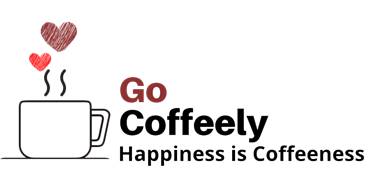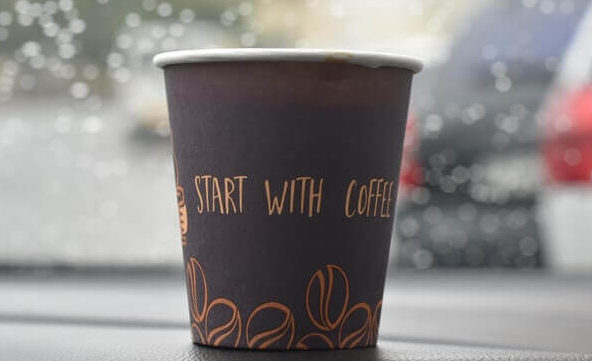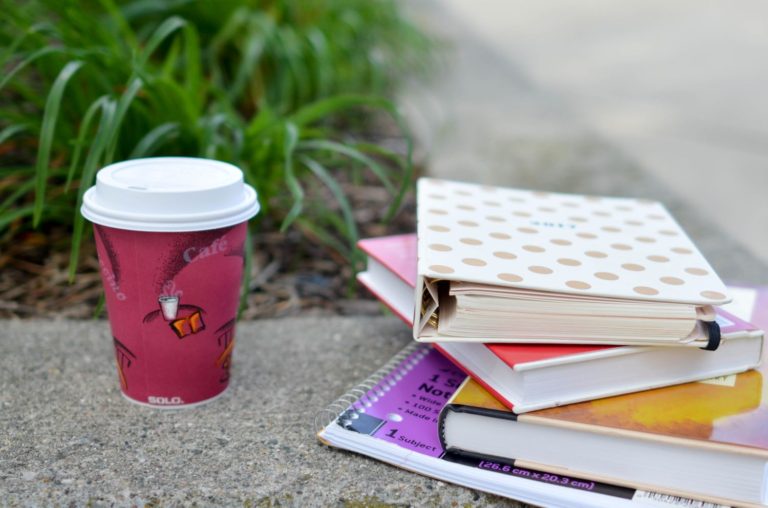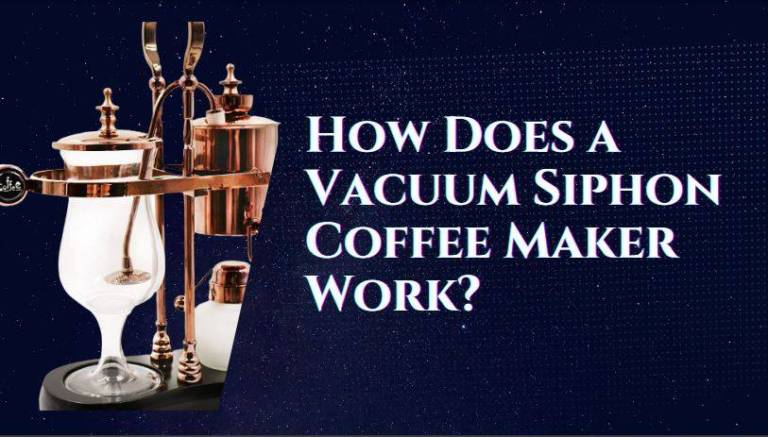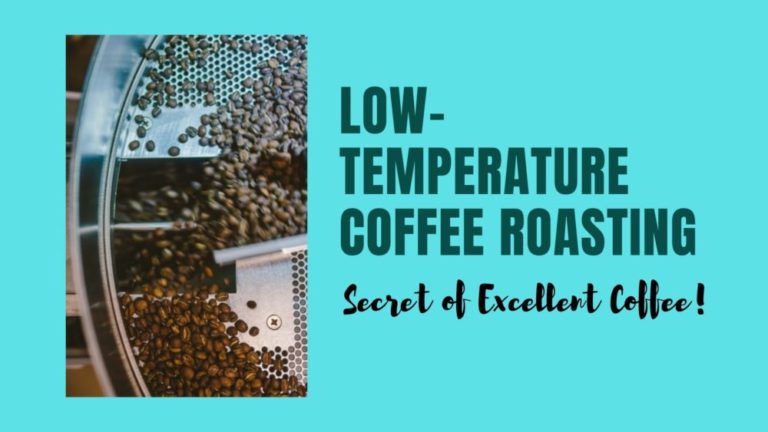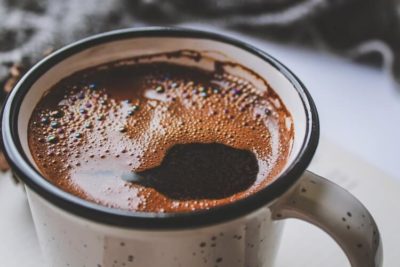Does Espresso Have More Caffeine Than Coffee?: The Ultimate Solution for 2022
Most people get puzzled whether the espresso has additional caffeine than regular coffee. There seems to be a never-ending debate regarding this question, but the truth is, espresso does have more caffeine than coffee. However, the amount of caffeine in coffee and espresso depends on a number of factors, including the type of beans used and how much water is used during preparation.
Does Espresso have more caffeine than coffee? We will solve today, the long battle of the time.
Before heading, there return many queries. What is espresso? How does it differ from coffee? How much caffeine in an espresso shot? How much caffeine in coffee? What has more caffeine latte or coffee?
The following sections can cover all your questions concerning caffeine myths and others. So there you go and learn an essential secret of espresso vs coffee debate.
TABLE OF CONTENTS
The Amount of Caffeine in Espresso Vs. Regular Coffee
Several studies found out the fact that espresso has more caffeine than regular coffee.
According to USDA value, the amount of espresso is 64 mg per ounce. A single shot of espresso contains 77 mg of caffeine (source: Caffeineinformer.com).
In the case of espresso, 100 gm of coffee contains 200 mg of caffeine. On the other hand, an average of 100 gm of regular coffee contains 40 mg of caffeine. So, with so many shreds of evidence, we can come to the conclusion that Espresso has more caffeine than regular coffee.
What Is An Espresso?
Espresso A technique of forcing hot water through a cake of ground roasted coffee beans to yield a strong cup of coffee.This coffee-brewing technique originated in Italy. It’s a method of preparing a cup of coffee, which is-
- Small in serving size
- Very strong in flavor
Let’s go for some detailed explanation about an espresso. Espresso is a flavoured, concentrated form of coffee served in shots. Coffee is ready by forcing boiling water under high pressure.
The result comes out as a more robust liquid than coffee topped with Crema. Crema gives espresso a fuller flavour than other coffee.
Do espresso beans have more caffeine? There’s no difference in espresso and other coffee plants. The variety occurs for the treatment of seeds.
Many espresso fans consider it as the purest form of coffee. As it requires high pressure, you’ll need an espresso machine for a perfect shot.
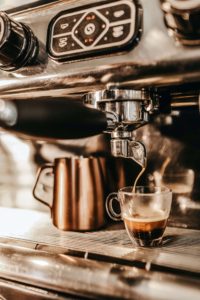
What Are The Types Of Espresso?
An espresso shot takes only 30 seconds to make. For a regular coffee machine, it may take 10 minutes or more. While within the 30 seconds, the espresso machine will provide you with a strong coffee. An excellent shot is less acidic than your regular one.
Before heading to the prime topic, Let’s get an idea about various types of shots.
Shot
It defines a single serving of Espresso as a shot.
Doppio
Two servings are thus a double shot or Espresso Doppio.
Ristretto
These types of shots are concise. It is highly concentrated.
Espresso Con Panna
Shots of Espresso topped with whipped cream.
Espresso Lungo
Long shots are espresso lungo. These shots usually contain 2 to 3 ounces.
Espresso Macchiato
Foamed milk on an espresso cup is espresso Macchiato.
3 Differences Between Espresso And Coffee
What precisely is the difference between espresso and coffee? It prepares both from coffee plants or beans. Still, espresso vs coffee dispute is on the rise. Here’s a quick guide on this upcoming issue.
Espresso and regular coffee have an original amount of caffeine. The surprising fact is, it depends on your perspective.
1. The Difference lies In The Brewing Method
There is a wide variety of coffee and espresso. But all drinks depend on the same coffee beans. The difference in caffeine levels has nothing to do with coffee beans. Instead, the brewing method of coffee is a critical reason here.
Let me show three leading factors here.
Roasting
After collecting coffee beans, the first step is roasting those beans. Roasting increases the capacity to bear high pressure. The dark roast is perfect for drinking with milk. For pour-over coffee, light roast beans are preferable.
Grinding
Grinding acts as a leading factor here. For espresso time, the duration is so small, and pressure is very high. The grind size needs to be fine. Here, you need to be careful about one fact. Too much fine grinds will provide you with a bitter coffee. That’s why the right grind size is essential.
For pour-over coffee, the size is coarser than espresso. For a perfect and robust espresso, you need a good grinder.
Brewing
Brewing is the core difference between espresso and coffee. The difference is how you make the coffee.
You can make regular coffee by filtering water through the coffee grounds. For espresso, you need an espresso machine. An espresso machine has about 9 bars to push boiling water through the beans.
2. Serving Size Of Espresso And Coffee Is Different
- The average serving size of regular coffee is 8 ounces.
- The usual serving size of the espresso is 1.5 ounce.
3. Espresso And Regular Coffee Provide Distinct Flavor
- Drip coffee cannot provide a full range of flavour. The oil present in the coffee and prime brewing time may allow some acidity. It acts as a negative role in developing less taste.
- Espresso usually is a blend of various beans providing a balance to any bitter flavours. Espresso made of over-roasted beans tastes, a sharp exception to well-prepared espresso.
7 Simple Truths About Different Caffeine Levels In Coffee
1.Temperature
What has more caffeine, espresso, or cold brew? The temperature of water used to brew ground makes a huge difference in the amount of caffeine. It affects the taste of the coffee too.
When it’s a matter of caffeine extraction, experts do not recommend too boiling water. The best temperature is about 205 degrees Fahrenheit.
The hotter the water, the sooner it will extract the caffeine. The temperature has a significant impact on increasing or decreasing caffeine quantity.
2. Saturation
If you want to extract all the caffeine from your beans, you must ensure one fact. You must saturate the coffee grinds. Thus, the saturation level of beans determines caffeine in drip coffee.
3. Time
Most of the caffeine releases during the opening time of extraction. It affects how much caffeine in a shot of espresso.
4. Caffeine Levels of Coffee Roasts
When you roast coffee beans, they expand in size, losing water. How much caffeine in coffee beans?
It is a common misconception of people that darker roasts contain more caffeine. Excess heat of darker roasts breaks the caffeine molecule. It results in lower caffeine levels.
5. Caffeine Levels of Ground Coffee Beans
The grinding level is one reason for affecting the caffeine level. Espresso and Turkish coffee need finer coffee grind levels than other coffee.
When the grinds are more delicate, it makes faster the process of extraction of caffeine. The finer the coffee grind, the higher the coffee’s caffeine quantity.
6. Coffee Brewing Techniques
There are several ways to brew coffee. Each method can affect the caffeine quantity of joe. Here are some popular techniques.
- Drip or filter brewing
- Percolating
- French press
- Boiling
7. Variation Of Beans
There are varieties of coffee in the world. Each of them contains different levels of caffeine. The most popular is Arabica coffee. 70% of the world’s coffee comes from Arabica beans. But, they have less caffeine than types of beans. Robusta beans have almost a double amount of caffeine compared to Arabica beans.
What Has More Caffeine? Espresso Or Coffee?
For caffeine in espresso and regular coffee, there’s much misinformation out there. This war needs an end.
‘Does espresso contain more caffeine than coffee?’ The correct answer is explanatory and tricky. Let’s get started. Before going to a detailed discussion, let’s make one thing clear. What is the concept of a cup or shot to you?
- An ounce espresso contains 64 mg of caffeine.
- One-ounce regular coffee contains 12 to 16 mg.
If you judge per ounce, then your espresso will be in the lead. But wait. Do you just drink one ounce of coffee? No, on average, you consume 8 ounces or more. So, how much caffeine in a cup of coffee? It’s 95 to 128 mg of caffeine you get from one cup of coffee. An espresso shots while providing 63 mg only. So your serving size determines caffeine quantity.
Let’s get a brief idea about caffeine in espresso vs coffee.
How Much Caffeine In A Shot Of Espresso?
Here’s the estimated caffeine content in original espresso form.
- Single shot: 30 to 100 mg
- Double shot: 60 to 190 mg
- Single shot (decaf): 8 mg
- Double shot (decaf): 16 mg
Are you interested in Starbucks’ caffeine content? Caffeine in an espresso shot of Starbucks is 75 mg.
How Much Caffeine In A Cup Of Coffee?
The Caffeine level may vary from coffee to coffee. The below list will provide you with a brief idea. Estimated Caffeine levels in various coffee types are here.
- Boiled Coffee (per 8 ounces): 160-240 milligrams
- Drip Brewed Arabica Coffee (6 ounces): 80-130 milligrams
- Drip Brewed Robusta Coffee (6 ounces): 140-200 milligrams
- Drip Brewed Single-Serve Coffee Pods: (usually) 75-150 milligrams
- Drip Brewed Passiona Excelsa/Arabica Low-Caffeine Coffee Blend (6 ounces): 40-60 milligrams
- French Press Coffee (8 ounces): 80-135 milligrams
- Instant Coffee (8 ounces): 27-173 milligrams
- Instant Decaf Coffee (8 ounces): 2-12 milligrams
- Percolated Coffee (5 ounces): 80-135 milligrams
Are you getting puzzled? Very difficult to visualize?
Don’t worry. Now it’s time to solve one of the most significant issues of the year.
Caffeine in Espresso And Regular Coffee Per Ounce:
Now you know every detail about espresso, or how much caffeine in a per ounce of coffee and espresso.
I’ve mentioned above that an ounce espresso contains 64 mg of Caffeine. An ounce coffee providing 12 to 16 mg only.
Let’s assume; you consume an equal amount of espresso and coffee. Then undoubtedly, espresso is the one containing a higher amount of caffeine.
Espresso is an extremely concentrated form of coffee. Regular coffee is not as focused compared to espresso. Each ounce of regular coffee contains less acid, aroma, and caffeine from a shot of espresso.
Yet, caffeine counts for espresso, and coffee varies among brands. It depends on the quality of a bean, the amount of coffee used, and the way it’s prepared.
Caffeine is the most consumed drug by people. Espresso and coffee are a significant source for this. Health experts suggest people avoid this because of some adverse effects. But up to a certain amount, caffeine consumption is healthy.
Caffeine in Expresso And Regular Coffee Per Serving:
Most people say that espresso is more caffeinated. Well, it has a lot to do with your perspective.
During the late 50s, a typical coffee serving size was between 4 and 6 ounces. But with time, the cup size increases almost eight times. Yet, it’s very tough to assess how much caffeine you are consuming in a regular coffee or a shot of espresso.
People say that espresso has more caffeine than a drip coffee because caffeine is a bitter drug. Also, espresso beans’ dark roasting creates a higher concentration of molecules. These bitter compounds from a darker roast are not because of caffeine.
However, Caffeine is an espresso shot, which may vary on a large scale from one serving to another.
Two reasons, you need to know, behind this variation.
- Every coffee bean is different in its way. Seeds come from unique countries or different sides of the hill. Naturally, they own a varying amount of caffeine. This amount results in variation in different servings.
- From one cafe to another, espresso or coffee recipes vary. Some may use 20g coffee while someone else is going for 12 g. This creates a significant difference in changing caffeine amounts per serving.
Now, you know, the typical serving sizes for coffee and espresso are different. Usually,
- Espresso shots are of one or two ounces. (64 to 80 mg caffeine per shot)
- Regular coffee drinks, starting from 8 ounces, can go to up to 16 ounces or more. (70 to 140 mg caffeine per 8 ounces of coffee)
A typical regular coffee contains more caffeine per serving than an espresso shot. Here 8 ounces coffee and 1 or 2 ounces of espresso are standard sizes.
.
So, Does Espresso Have More Caffeine Than Coffee?
On average, coffee lovers consume 16 ounces or more coffee at a stretch. It is simple they are getting more caffeine from a regular mug of coffee than espresso.
Espresso shots come in 1.5-2 ounces servings, but regular coffee comes via 8-16 ounces servings. So, yes, espresso is more durable than regular coffee. But people drink a little of it.
People are the right to a particular thing about espresso. It may take 30 minutes for you to finish a regular coffee. In contrast, you can complete your espresso within 3 minutes. It implies that within a brief period, you consume a suitable amount of caffeine. If you drink fast an espresso shot with an empty stomach, it can cause jitters,
From a beverage perspective, espresso serving is in a smaller volume. Thus, you get less caffeine. But from a volume perspective, espresso has more caffeine compared to drip coffee. A high concentration of espresso acts behind this.
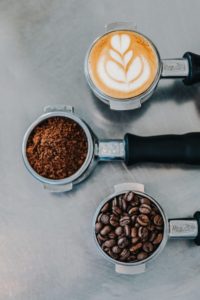
Frequently Asked Questions: Expresso Or Regular Coffee?
Which Coffee Has The Most Caffeine?
- Light roast and finely ground coffee provide more caffeine.
- Robusta coffee, brewed with a drip filter, or a French press for five minutes, is likely to have most caffeine.
- If you use over 30 grams of coffee per 12 to 16 ounces of water, it will offer you the most caffeinated coffee.
Which Coffee Has The Least Caffeine?
- Dark roast, coarsely ground Arabica beans, brewed with a quicker brewing method, may have the least caffeine.
- For a super-low caffeine coffee, go for decaf coffee.
- Fancy coffee drinks, topped with cream, and other additives provide less caffeinated coffee.
Which Kind of Espresso Has the Least Caffeine?
- An espresso shot prepared with 7 grams of dark roast, Robusta beans has the least caffeine. A single ristretto shot provides the least caffeine,
- For a super-low caffeine ristretto, go for decaf coffee, or you can blend with Excelsa beans.
Isn’t Espresso A Coffee?
Do you know what coffee is? It is the liquid extracted from coffee beans. You can avail of a hotshot of espresso from any kind of Robusta or Arabica Bean.
You have distinct ways of preparing coffee. We make espresso through specific preparation. So you can say all espresso is one kind of coffee. But remember not your every coffee is espresso.
Espresso or Regular Coffee Which One Is Healthy?
It’s a burning confusion about which coffee is good for health. Both Regular coffee and espresso provide magnesium, calcium, and potassium.
But coffee’s serving cup is about 8 ounces. So, Coffee provides more magnesium and potassium per serving than espresso.
Summary
Are you tired of reading this lengthy article? But curious to know ‘does espresso have more caffeine than coffee? ‘This quick summary is for you.
- Regular Coffee: ~70 to 140 mg per serving
- Espresso: ~60 to 100 mg per serving
Again,
- Regular Coffee: ~12 to 16 mg per ounce
- Espresso: ~64 mg per ounce
Here to mention,
- Regular coffee serving size-8 to 16 ounce
- Espresso serving size-1.5 to 2 ounces
Now here is the distinction of espresso vs coffee. You know how much caffeine in a shot of espresso. You know how much caffeine in a cup of coffee. You can decide yourself too.
Espresso seems caffeinated more per ounce, from a typical serving size perspective.
